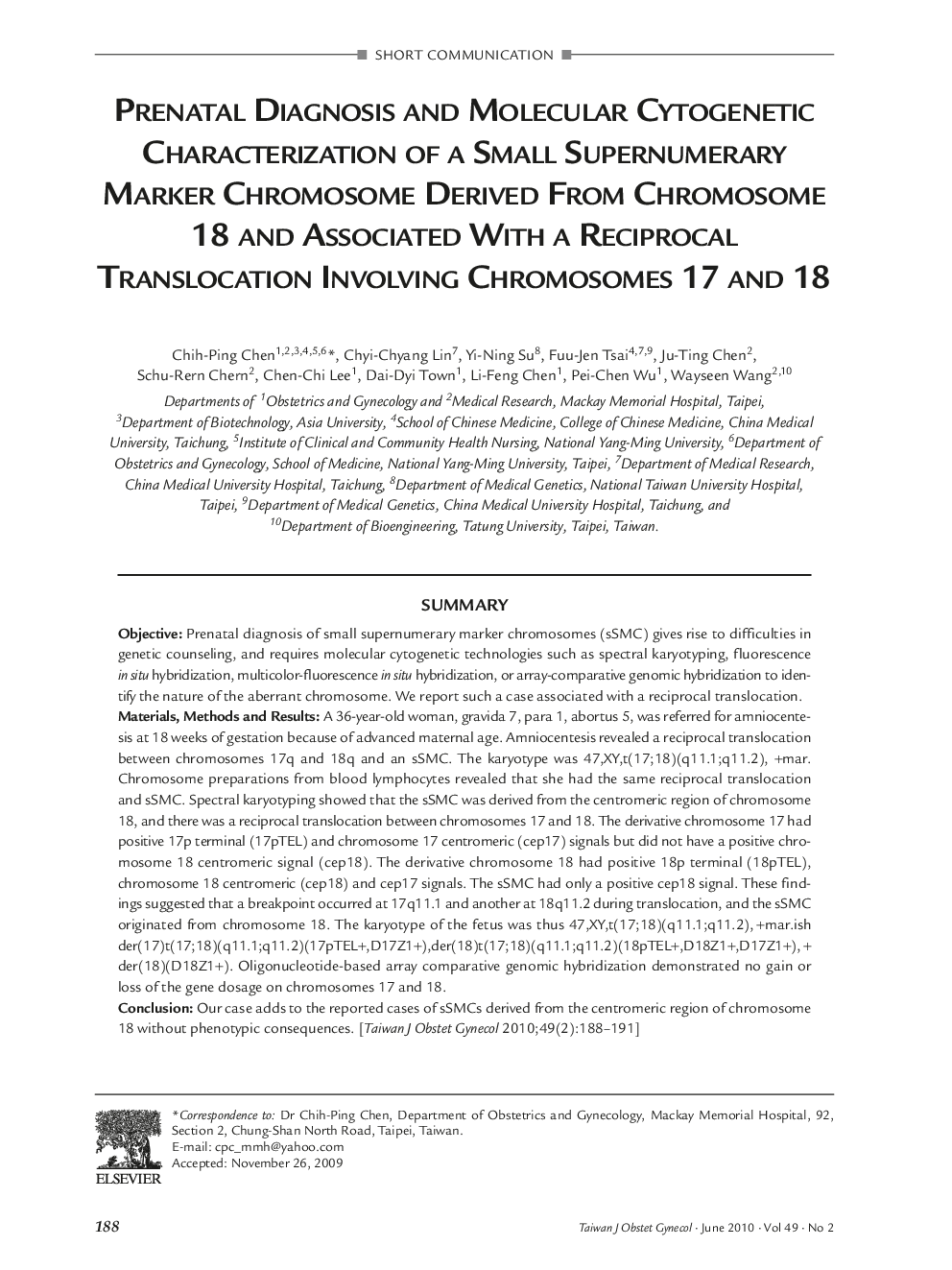| Article ID | Journal | Published Year | Pages | File Type |
|---|---|---|---|---|
| 3975848 | Taiwanese Journal of Obstetrics and Gynecology | 2010 | 4 Pages |
SummaryObjectivePrenatal diagnosis of small supernumerary marker chromosomes (sSMC) gives rise to difficulties in genetic counseling, and requires molecular cytogenetic technologies such as spectral karyotyping, fluorescence in situ hybridization, multicolor-fluorescence in situ hybridization, or array-comparative genomic hybridization to identify the nature of the aberrant chromosome. We report such a case associated with a reciprocal translocation.Materials, Methods and ResultsA 36-year-old woman, gravida 7, para 1, abortus 5, was referred for amniocentesis at 18 weeks of gestation because of advanced maternal age. Amniocentesis revealed a reciprocal translocation between chromosomes 17q and 18q and an sSMC. The karyotype was 47,XY,t(17;18)(q11.1;q11.2), +mar. Chromosome preparations from blood lymphocytes revealed that she had the same reciprocal translocation and sSMC. Spectral karyotyping showed that the sSMC was derived from the centromeric region of chromosome 18, and there was a reciprocal translocation between chromosomes 17 and 18. The derivative chromosome 17 had positive 17p terminal (17pTEL) and chromosome 17 centromeric (cep17) signals but did not have a positive chromosome 18 centromeric signal (cep18). The derivative chromosome 18 had positive 18p terminal (18pTEL), chromosome 18 centromeric (cep18) and cep17 signals. The sSMC had only a positive cep18 signal. These findings suggested that a breakpoint occurred at 17q11.1 and another at 18q11.2 during translocation, and the sSMC originated from chromosome 18. The karyotype of the fetus was thus 47,XY,t(17;18)(q11.1;q11.2), +mar.ish der(17)t(17;18)(q11.1;q11.2)(17pTEL+,D17Z1+),der(18)t(17;18)(q11.1;q11.2)(18pTEL+,D18Z1+,D17Z1+), + der(18)(D18Z1+). Oligonucleotide-based array comparative genomic hybridization demonstrated no gain or loss of the gene dosage on chromosomes 17 and 18.ConclusionOur case adds to the reported cases of sSMCs derived from the centromeric region of chromosome 18 without phenotypic consequences.
